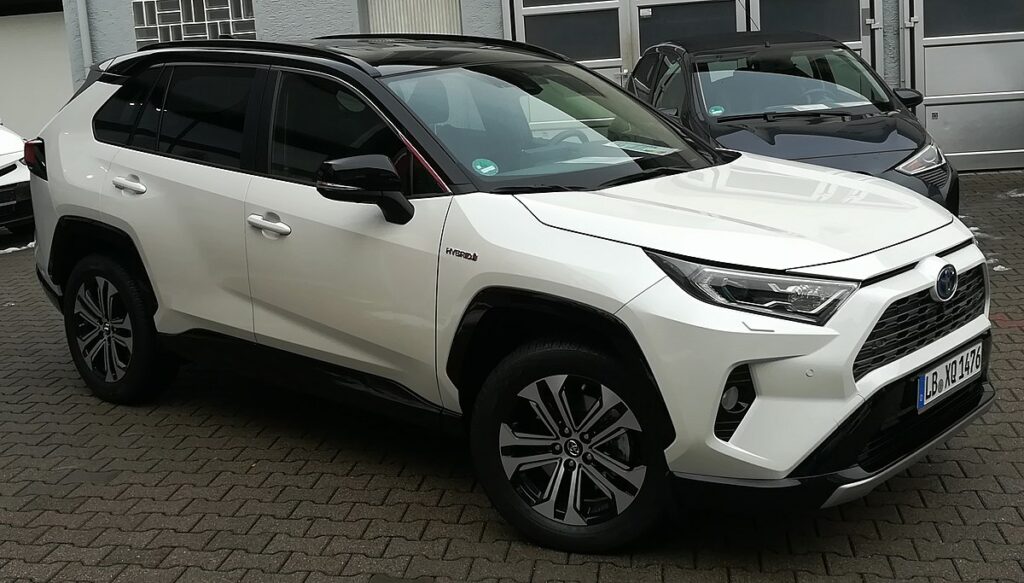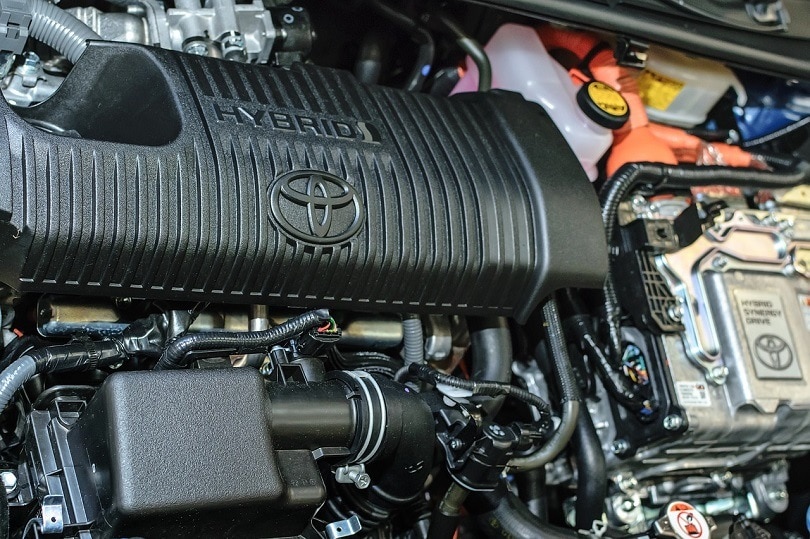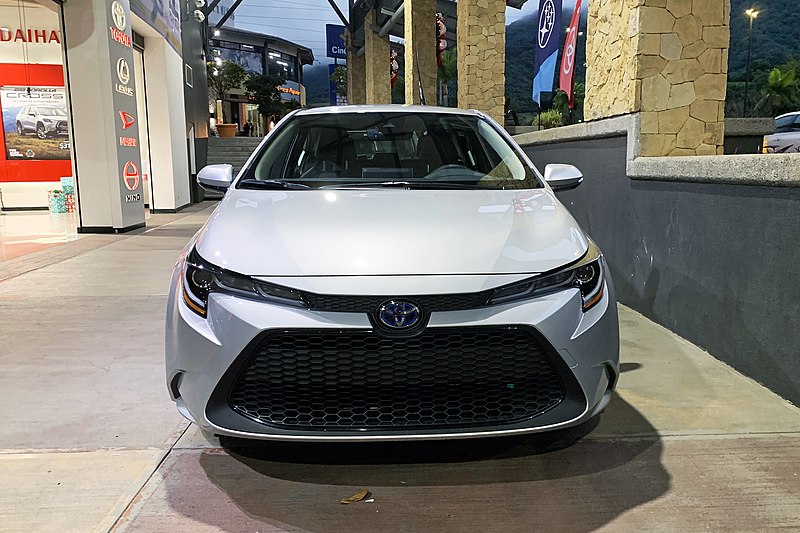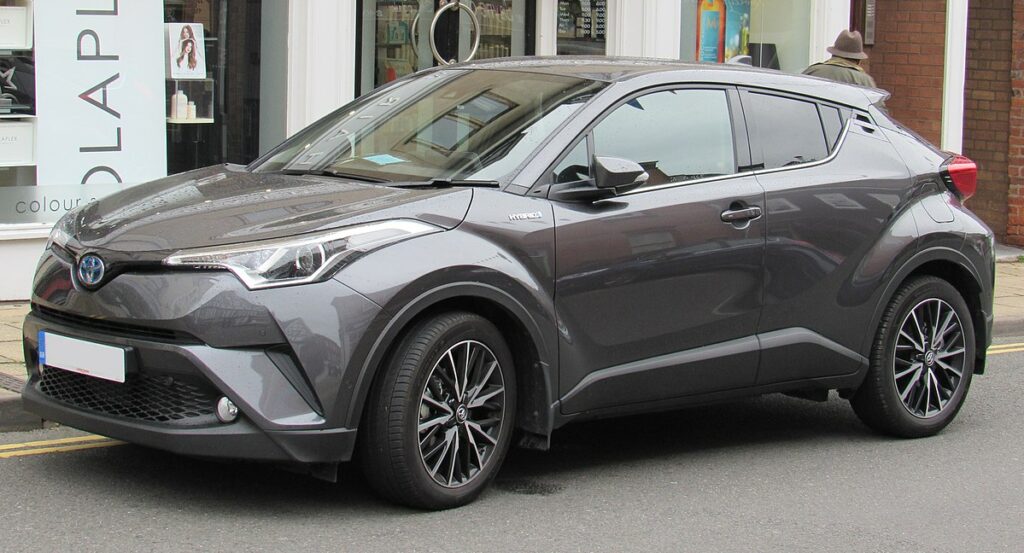How Do Toyota Hybrids Work? Engine & Battery Facts
-
Pete Ortiz
- Last updated:

The auto industry contributes greatly to the global economy by producing vehicles that efficiently and effectively move people and goods across different regions. Since its grand entry in the late 1800s, the auto industry has expanded rapidly to not only account for 3 to 3.5% of the global GDP1 but also to diversify how cars are run.
Traditionally, most cars were made from internal combustion engines converting gasoline into energy. But with surging fuel costs, pollution issues, and geopolitics surrounding fossil fuels, some manufacturers searched for alternatives such as hybrid vehicles.
How Do Hybrid Cars Work?
A hybrid car uses two distinct sources of power. It combines power from at least one electric motor and an internal combustion engine, and as it moves, negative energy is recaptured to charge batteries with or without plugging into a power source.
Both the motor and the engine may work together or separately. For instance, most Toyota hybrids have been designed to auto shift to electric motors when driving around town and jump back to the gasoline engine on an open road to achieve higher speeds, with the end results being better fuel economy, more power, and high efficiency.
To sum up, the basic principle of hybrid cars is to attain maximum power output with less energy—the electric motor is best at producing torque while the gasoline engine at maintaining high speed. Thus, switching between the two is a win-win.

Components of a Hybrid Car
A hybrid has unique interrelated components that work side by side.
Internal Combustion Engine
This is one of the two sources of power in Toyota hybrid cars. It produces power by converting chemical energy in fuel to mechanical energy in a cylinder through combustion. The power may be directed to wheels or used to generate electric energy for the motor in the case of hybrid cars.
Electric Motor
An electric motor is the second of the two power-generating components that convert electrical energy into mechanical energy. A motor obtains its power from large high-voltage batteries hidden below the rear seats. The battery may be recharged through a plug-in or from regenerative braking. Either way, an electric motor needs a battery to run, and this is the feature that makes hybrids special, eco-friendly, and highly reliable.
DC–AC Converter
A hybrid car usually carries a high voltage battery which will burn out most low-voltage electric accessories such as dashboard lights, infotainment monitors, and fans if connected directly. A DC–AC converter steps down high-voltage DC to low-voltage AC to run the car’s accessories and charge the auxiliary battery.
Power Control Unit
The power control unit is an essential component that monitors and controls the flow of electricity to all parts of the hybrid car. The unit also controls the performance of hybrid cars by regulating the speed and rotation of the electric motor.
Batteries
Hybrid vehicles have batteries as the motors’ source of electrical energy and generate power for auxiliary systems. Batteries are charged through regenerative braking, internal combustion engine, or external sources. Hybrid cars that charge from external sources are called plug-in hybrids.
On average, the voltage capacity of hybrid vehicle batteries is between 12V and 200V and clock about 100,000 miles before retiring.

Transmission System
A transmission system or gearbox conveys power from engines and motors to the wheels. It can be manual, automatic, or continuously variable transmission (CVT). They are all geared towards excellent power transmission and a better driving experience.
Within the transmission system, gears are arranged in worm, planetary, helical, or double helical styles.
Electric Generator
This is a power generating unit that is found in some hybrid cars that convert mechanical energy into electric energy to charge up batteries. The electric generator may be the motor itself or a separate unit depending on the hybrid model.
Thermal Regulation System
Simply referred to as a thermal system, this is a set of components that ensures the engine, battery, and motor are within a certain temperature range to operate optimally. Additionally, the system conserves energy that would have been otherwise wasted through heat loss.
The 5 Different Types of Toyota Hybrid Cars
1. Parallel Hybrid
In a parallel drivetrain, both sources of power provide torque to a single input that’s often directly into the gearbox and can either work separately or be merged for maximum power. When only the electric motor is in use, the engine’s clutch remains open and runs freely at the motor’s speed.
This is the most popular hybrid car drivetrain from 2016, common in the Toyota Prius and Toyota Camry. And thanks to regenerative braking, the engine is very efficient in stop-and-go city drives.
2. Series Hybrid
Under the series hybrid, both the electric motor and petrol engine work in a line to provide propulsion, as opposed to alongside each other.
The internal combustion engine, however, doesn’t propel the vehicle. It instead generates electricity to recharge the battery while the electric motor propels the vehicle. In simple terms, the internal combustion engine only acts as a generator to progressively charge the battery to the next charging station.

3. Plug-In Hybrid
The plug-in drivetrain takes the hybrid concept a step further. While other hybrid concepts charge their batteries internally, the plug-in hybrid can be charged from an external source, giving it a significant advantage in terms of overall fuel economy.
Generally, plug-in hybrids use a 110-volt electrical socket to charge the much larger high-voltage battery. With the growing number of charging stations, the plug-in hybrid’s future is bright.
4. Mild Hybrid
Mild hybrids are among the recent innovations in hybrid technology. As the name suggests, a mild hybrid system doesn’t propel the car on electric power alone. The system instead gives a slight boost to the gasoline engine, typically after accelerating from a dead stop, and assists in getting rid of the weight of a power-hungry system like the air conditioning on the gasoline engine.
Usually, mild hybrids exist in the form of 48-volt electric systems and don’t need to be plugged in. However, the batteries get charged via combined power from the gasoline engine, and energy recuperates when braking.
5. Series-Parallel Hybrid
Also referred to as the Power-Split hybrid, the series-parallel hybrid combines the best features of the configurations named above.
In this case, the torque delivered by either the electric motor, petrol, or a variable combination of both is through a gear set or a series of clutches to the gearbox. The main advantage of this system is that it facilitates smooth shifts between the two motors and linear power delivery.
How Do Hybrid Engines Drive Toyota Hybrid Cars?
Whether it’s the iconic Toyota Prius, the ever-present Corolla, or the latest Sequoia, all Toyota hybrids operate under the same concept.
Hybrid Engines
Toyota hybrid engines are similar to a standard internal combustion engine vehicle (ICEV). The only difference is that the former’s engine is compact and has a special drivetrain.
In a spark-ignited engine configuration, a mixture of fuel and air is injected from a carburetor into the piston cylinder through an intake valve. This is called the intake stroke, and only a few drops of gasoline are mixed with air to make it explode.
The piston then compresses the mixture to allow more energy to be released. At the peak of the compression, the spark plug introduces a high-voltage spark to ignite the mixture. The resulting explosion pushes the piston downwards, rotating the crankshaft, and through a system of gears, power is directed to the wheels.
The cycle ends when exhaust valves open to let out gasses.

Electric Motors
Electric motors obtain power from batteries or directly from the engine to generate electric current and a magnetic field. The interaction between electric current and magnetic field then generates force in the form of torque which acts on the motor shaft. Similar to the crankshaft, the shaft connects to gears and transmits power to the wheels.
How Is Power From the Engine and Motors Directed to the Wheels?
The most complex process of a hybrid Toyota is efficiently harnessing power from the engine or the motor to the wheels without slowing down. Fortunately, an ingenious tool known as a power split device does all the work in a split second. It is termed the “heart” of a hybrid vehicle and closely resembles a gearbox.
However, unlike traditional gears, a power split device acts as a confluence or T-joint where it can merge power from two sources or alternate between either source, respectively. It basically allows the car to juggle between engine and motors or run with both smoothly.
How Does the Hybrid Battery Recharge?
There are two major ways of recharging the battery.
Plug-Ins
Plug-in cars enhance the hybrid ideology by tabling a bigger battery that uses external sources of power to charge. The battery is similar to an electric car’s with a modest output but requires a few hours to charge up.
Plug-ins have two levels of chargers:
Level 1 (L1) chargers
These are the slowest charging methods and work with a standard 120V outlet to supply the car with up to 2.4kW per hour, equivalent to a 5-mile journey. The charger is included in the original cost of a Toyota, and an overnight charge will extend the car’s range by around 50 miles.
Level 2 (L2) chargers
L2 chargers operate with 240V outlets and take less than 8 hours to completely charge a battery. The charger is prevalent in many public spaces, in front of convenience stores and malls. Besides that, you can buy and install it at home for between $1,000 and $2,000.
Regenerative Braking
Braking generates a lot of heat energy. Traditionally, this energy was lost to the environment. Other than wasting energy, braking friction led to wear and tear, creating room for regenerative braking.
Regenerative braking is converting kinetic energy to electrical energy to charge up high-voltage batteries. In conventional internal combustion cars, it recharges 24V batteries used to run auxiliary systems.
The recharging process begins when a driver lifts the foot off the accelerating pedal. This stops the flow of energy to the motor, but the rotor will continue rotating nonetheless. In some electric vehicles, the motor may be an electric generator, or the two may be different components. Despite manufacturing differences, regenerative braking captures more than 70% of kinetic energy.

Can Toyota Hybrids Run on Batteries Only?
Yes. Toyota hybrids can run on batteries only, but according to the manufacturer, the motors and the engine are designed to work side by side for higher acceleration speed and smoother drives.
Typically, the company reports that the battery contributes up to 62% of the journey’s power needs. Through regenerative braking and good road conditions, the range may be extended further.
Is a Hybrid Toyota Worth It?
There are plenty of reasons to buy a hybrid car. Compared to gas-only cars, it reduces the carbon footprint and squeezes out more power from the tank. In some cases, it has a better driving experience, and you are eligible for handsome rebates.
If you are aiming at saving costs and saving the environment, a Toyota hybrid is a great option. Unfortunately, the car comes with a high maintenance cost of up to $1,000 per year, and only a few qualified mechanics can work on it.
In Conclusion
Toyota hybrid cars have an internal combustion engine and electric motor as the main source of power, which work with a specific set of components for smooth power transmission, efficiency, and comfortable driving. The engine and motor may work dependently or independently, depending on the configuration.
Besides their uniqueness, Toyota hybrids are eco-friendly and require less fuel to run.
- https://www.caranddriver.com/features/a26390899/what-is-hybrid-car/
- https://motorlease.com/article/hybrid-vehicle-types/
- https://www.cat.com/en_ID/by-industry/electric-power/Articles/White-papers/lean-burn-gas-generator-sets.html
- https://www.carrentalgateway.com/glossary/internal-combustion-engine-vehicle/
- https://auto.howstuffworks.com/engine.html
- https://www.braunability.com/us/en/blog/mobility-solutions/how-long-do-hybrid-batteries-last.html#:~:text=Distance,upper%20limit%20on%20battery%20life
- https://www.felsics.com/parts-of-a-hybrid-car-10-major-parts-and-their-functions/
- https://www.es.kearney.com/automotive/article/-/insights/the-contribution-of-the-automobile-industry-to-technology-and-value-creation
- https://afdc.energy.gov/vehicles/how-do-hybrid-electric-cars-work
- https://www.tiresplus.com/blog/brakes/what-is-regenerative-braking-in-electric-vehicles/
- https://pod-point.com/guides/driver/how-long-to-charge-an-electric-car#:~:text=The%20time%20it%20takes%20to,with%20a%207kW%20charging%20point
- https://www.quora.com/Is-it-more-expensive-to-maintain-a-hybrid-car
Featured Image Credit: 2019 Toyota RAV4 Hybrid 01 (Alexander Migl, Wikimedia Commons CC SA 4.0 International)
Contents


